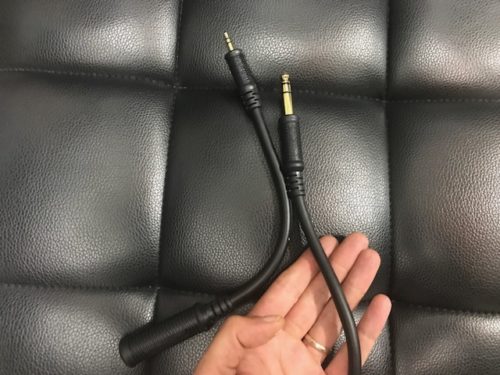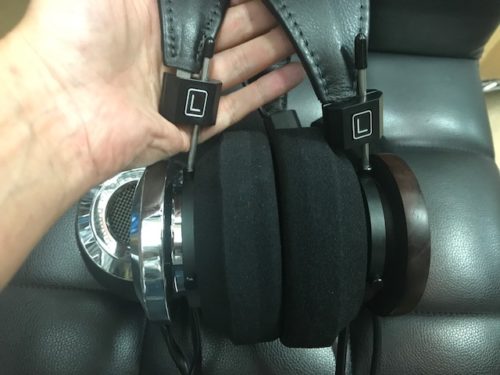Though Grado usually produces a fairly consistent sound signature, I was interested to see how different materials affect the sound associated with this brand. The wooden GS3000e and the hybrid PS1000e are only a hundred bucks apart in price. Which sound profile works better for your ears and preferred music genre? Let’s find out in this Grado GS3000e vs Grado PS1000e Headphones Review.
Grado GS3000e vs Grado PS1000e Headphones Review
IN the BOX


FIT
Though they are both the same size, the PS1000e is heavier than the GS3000e. It also feels bottom heavy when you’re wearing it, throwing the fit slightly off balance. As a result, the GS3000e is a more comfortable feel. The GS3000e also has a wider headband.

DESIGN
Grado calls the GS3000e the finest wooden headphones that they have built to date. Made from Cocobolo, these cans are designed to produce and textured and emotive sound. The PS1000e, on the other hand, is a hybrid design, made from a combination of chrome-plated aluminum and hand-crafted mahogany. This union of materials reduces any ringing that interferes with the sound. The way the wood and metal react to sound vibrations is supposedly unaffected by transient distortions. Thus, I’m expecting a more colored sound from the GS3000e.
Both headphones have a low impedance and require minimal amplification.
SOUND
Lows
In true Grado fashion, neither headphones deliver big lows. But the PS1000e offers a more punchy, chiseled bass. If you’re going to listen to any kind of pop or hip-hop, you should opt for the PS1000e. The GS3000e produces a softer low-end, with less presence and definition. And though it provides some amount of warmth, it’s a more relaxed and veiled sound. This makes it more ideal for acoustic instruments because it lacks the tightness of the PS1000e.
Mids
Though the low-end is less emphasized on the GS3000e, it offers a slightly more even midrange. As a result, vocals sound a little less forward on the GS3000e, and you feel like you’re getting a wider spectrum of sound. Which cans are better for rock? Though I usually like more low-end oomf, the more present low-mids on the GS3000e make for a fuller sound, especially with respect to big rock choruses. The jump from lows to highs is more subtle on the GS3000e. Acoustic instruments are conveyed more naturally. In general, the production of sound is more heavy handed on the PS1000e. You could argue that the PS1000e is more precise, but on the GS3000e, instruments are handled with more emotion and finesse.
Highs
Again, there’s a greater sense of definition on the PS1000e, making the notes feel a little more separated. But when it comes to acoustic instruments, like violins, the GS3000e offers more texture and nuance. If you’re a Sennheiser fan, you’ll probably enjoy the GS3000e for its softer feel. The highs just have less edge. And this is another reason that the PS1000e is more suitable for pop. Percussion comes out brighter and tighter, giving it more snap than the relatively laid back GS3000e.
Soundstage
As usual, Grado does an outstanding job of conveying a spacious multidimensional soundstage. But because of the PS1000e’s firmer feel, the instrument placement sounds a bit more accurate.
SUMMARY
Do judge a book by its cover. The PS1000e offers a harder feel, while the GS3000e absorbs some of that edge. The PS1000e has a little less character and sounds more like a reference headphone. The GS3000e might not have that sense of pinpoint accuracy, but delivers a more emotive sound with respect to most genres.
You can find these cans for the best price at:
Audio 46: Grado PS1000e Open-Back Headphones
Audio 46: Grado GS3000e Open-Back Headphones
Amazon: Grado PS1000e Professional Series Dynamic Open Air Stereo Headphone
MajorHiFi may receive commission from retail offers.
SPECIFICATIONS
|
Grado PS1000e |
Grado GS3000e |
|
| Transducer Type | Dynamic | Dynamic |
| Operating Principal | Open-Air | Open-Air |
| Frequency Response | 5 – 50,000hz | 4 – 51,000hz |
| Sensitivity | 99.8dB | 99.8 |
| Impedance | 32 Ohms | 32 Ohms |
MAJORHIFI may receive commissions from retail offers.








